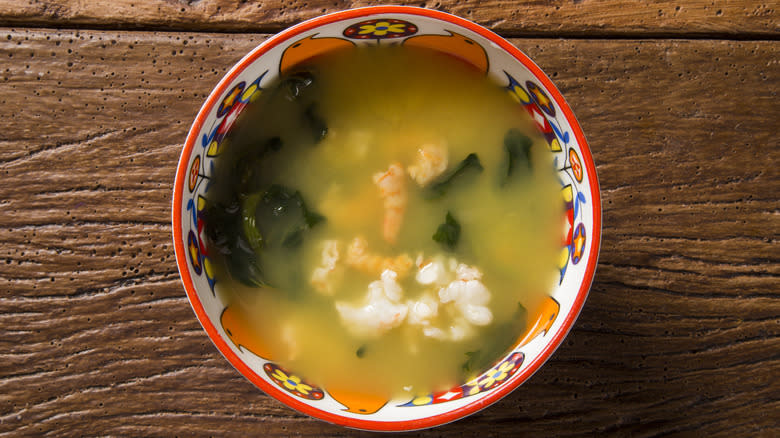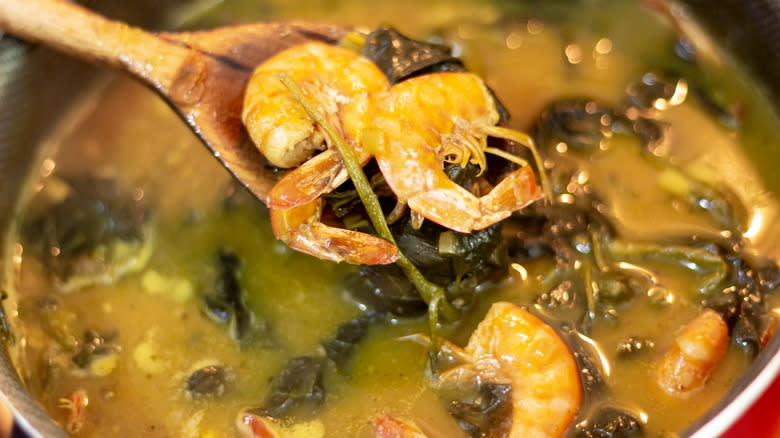Tacacá Is The Powerfully Flavorful Amazonian Soup That Spans Generations

The top global Google searches of 2023 are in, and nestled in the cozy No. 7 spot for the recipe category is a word not so familiar to those outside of Brazil — tacacá. We should begin by saying that tacacá is a soup, but this isn't your typical fair-to-middling broth made with humdrum ingredients — tacacá is a culinary voyage. With culturally exclusive flavors ranging everywhere from tangy to, believe it or not, numbing, this dish is as rich in history as it is on the palate.
Tacacá is an Amazonian street food made from a broth consisting of jambú (a leafy plant with anesthetic properties), herbs, tucupi (a byproduct of yuca ), shrimp, and chili peppers. Most often enjoyed in the afternoon, vendors, who are known as tacacazeiras , serve the soup in dried gourds or ceramic bowls, which are often bundled in a woven basket since the soup is so hot. But don't expect a spoon when ordering this dish: Tacacá is intended to be sipped straight from the bowl. While some prominent city vendors have worked their way up to selling directly from a brick-and-mortar, most tacacazeiras vend from stalls and carts.
According to anthropologists, eating tacacá originated from Amerindian tribes native to the region now known as Belém. From its indigenous origins, tacacá is said to have migrated to the cities along the Amazon river in the 18th century, and has now become a dish distinctive and customary to the regions around the Amazon.
Read more: 20 Popular Canned Soups, Ranked Worst To Best
Flavor Profiles Unique To The Amazon

The base of this ever-so-unique soup is tucupi, a yellow sauce extracted from the wild yuca root, which is exclusive to Brazil's Amazon jungle. Tucupi is prepared by peeling, grating, and juicing the yuca in a basket-like woven instrument called a tipiti. During this stage, raw tucupi is poisonous, so in order to eliminate the poison, it must be boiled for three to five days. Once safe for consumption, the sauce is bottled and ready to be sold.
To begin the process of crafting tacacá, the tucupi is boiled with a generous serving of salt and various flavorful herbs native to Brazil. The broth is then spooned into dried gourds, and salted shrimp and chili peppers are added. Next, a gel made from tapioca starch — which is created as a result of the tucupi's resting period — is incorporated to give the broth a smooth texture.
To top everything off, the cook will place in a few jambú leaves. Jambú is a northern Brazilian plant used in many dishes in the Amazon, and it's what gives the tacacá its mouth-numbing, tingling characteristic. Known as the toothache plant in English, jambú has anesthetic properties that are often used in remedies for tooth pain. Typically, tacacá is served with a skewer to easily pick out the jambú and shrimp for enjoyment.
Read the original article on Tasting Table.

